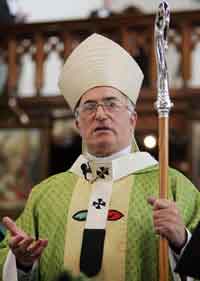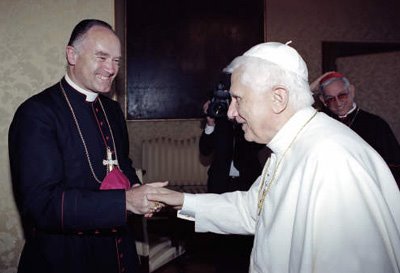Glasgow, Scotland, Aug 30, 2011 / 12:56 pm (CNA/EWTN NEWS). - The Archbishop of Glasgow, Scotland has told Catholics in his archdiocese not to kneel to receive communion.
“The Faithful should follow the General Instruction of the Roman Missal, namely coming to communion in procession and standing to receive Holy Communion,” wrote Archbishop Mario Conti in a letter to all his priests, dated August 25.
“The Faithful should follow the General Instruction of the Roman Missal, namely coming to communion in procession and standing to receive Holy Communion,” wrote Archbishop Mario Conti in a letter to all his priests, dated August 25.
“Standing in our Western culture is a mark of respect: kneeling at the altar rails (where they continue to exist) is not the practice envisaged by the instructions in the Missal,” he stated.
The archbishop’s letter was issued ahead of the introduction of the new translation of the Roman Missal, which comes into effect throughout the English-speaking world this coming November. Ironically, his instruction comes only a year after Pope Benedict XVI celebrated Mass in Glasgow. At that papal Mass, all those receiving communion from the Pope did so kneeling on a prie-dieu.
“This is really awful,” one Glasgow priest, who wished to remain anonymous, wrote to CNA.
“The bishop is indeed the moderator of the liturgical life of the diocese. However, what concerns a number of the priests in Glasgow is that our Archbishop knowingly exceeds his legitimate authority when he attempts to remove liberties foreseen by the Roman Missal itself.”



















